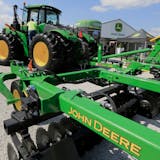Editor's note: This is the first in a three-part series on the state of Major League Baseball. Stories on the challenges of hooking the younger demographic (Monday) and the future of the game (Thursday) are to come.
The game was grinding. Paul Molitor's wheels were turning.
Two outs, top of seventh, runners on second and third. One of baseball's best hitters, J.D. Martinez, staring down Twins reliever Trevor Hildenberger.
Molitor scanned a laminated card full of data from the Twins' analytics department. Each pitcher and opposing batter are assigned a number on a color-coded matchup grid: Green is favorable, yellow neutral, red danger.
With the Twins leading Boston 2-1, Molitor's gut told him to ride Hildenberger. His card supported his instincts. The Twins shifted an extra infielder to the right side. Didn't matter. Martinez whiffed for strike three.
That singular snapshot from a 3-hour, 14-minute game June 19 served as a microcosm of Major League Baseball in 2018: Managers armed with volumes of data, analytics driving defensive shifts, bullpen use, and oh yes, another strikeout.
The Grand Old Game, wired with technological enhancements, looks smarter than ever, but it's wheezing, too. Sophisticated data influence almost every decision, but the results have produced more strikeouts, fewer balls in play and more dead time.
"We are probably in the most dramatic changes in the history of baseball," said former All-Star infielder Harold Reynolds, an analyst for MLB Network.



